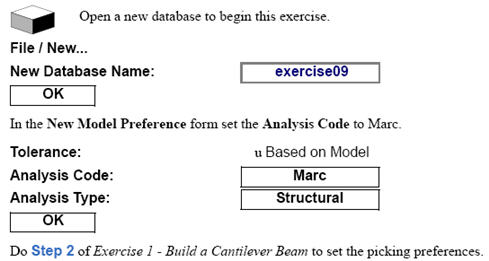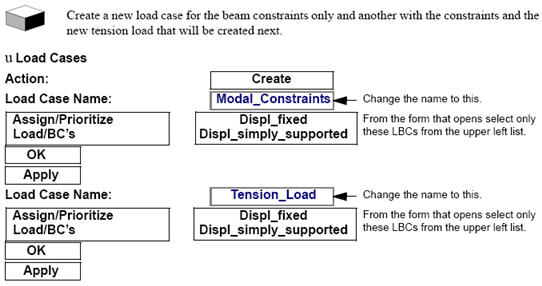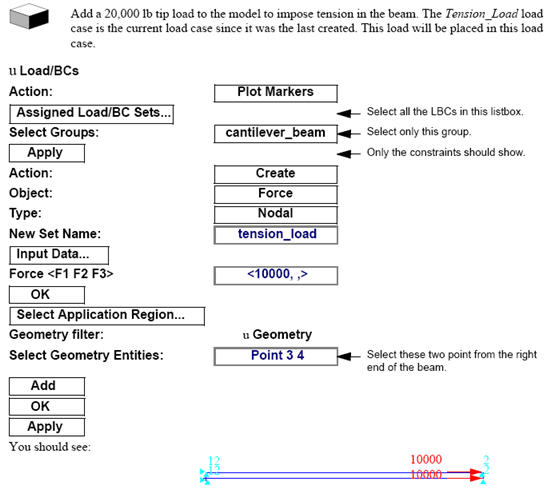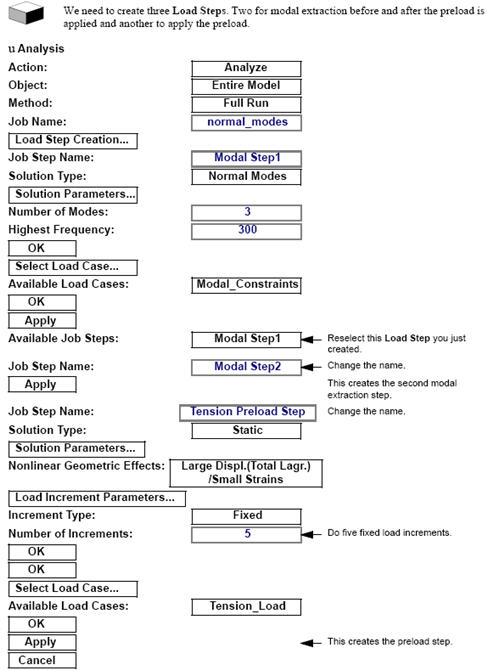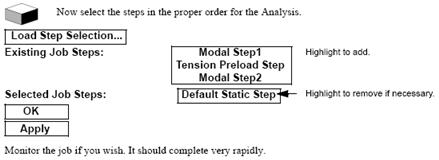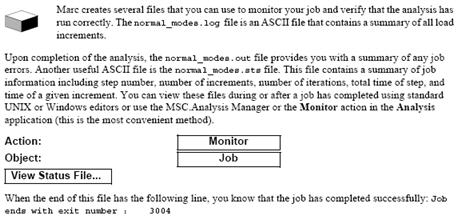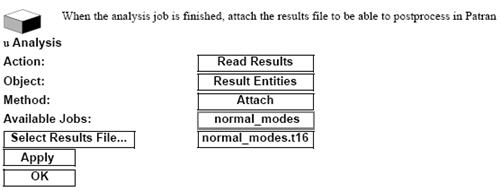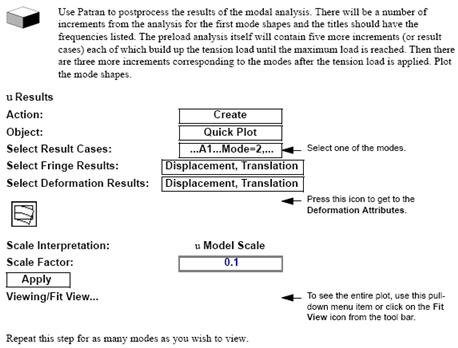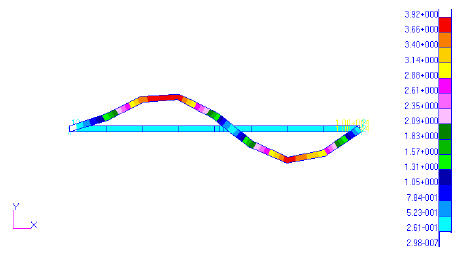XXXXXXXXXXXXXXXXXXXXXXXXXXXXXXXXXXXXXXXXXXXXXXXXXXXXXXXXXXXXXXXXXXXXXXXXXXXXXXXXXXXXXXXXXXXXXXXXXXXXXXXXXXXXXXXXXXXXXXXXXXXXXXXXXXXXXXXXXXXXXXXXXXXXXXXX''"> Exercise 9 - Natural Frequency Analysis
In this Analysis you will extract the first three modes of a simply supported - fixed beam. You will compare these results to theoretical conditions. Next, you will apply an axial load to the end of the beam. This is analogous to stretching a guitar string. The result is the amount the frequency should increase. You will then compare the results of the preloaded and unloaded structure. This entire procedure will be done in a single analysis using three analysis Load Steps.
Step 1: Do Exercise 1 - Build a Cantilever Beam
Step 2: Open a New Database
Step 3: Import the Old Database
Step 4: Post Only the Beam
Step 5: Apply a Simple Support at the Right End
Step 6: Create Two New Load Cases
Step 7: Add a Tip Tension Load
Step 8: Create the Analysis Load Steps
Step 9: Submit the Analysis
Step 10: Monitor the Analysis
Step 11: Read the Results
Step 12: Plot the Mode Shapes
The following plot should appear:
The Theoretical Comparison
The frequency for a fixed - simply supported beam is given by the following equations:
(Reference Formulas For Natural Frequency and Mode Shape, Blevins, 1984)
L = 100 in
m = mass/unit length

= dimensionless frequency parameter
The theoretical and finite element results are given in the table below. Note that the finite element accuracy decreases for the higher modes. The accuracy of the finite elements results depends on the number of degrees of freedom in the model. To achieve more accurate results, a finer mesh would be required for the higher modes. In general, we recommend that a model contain a minimum of 4 elements per half sine wave. Based on this criteria, our model would require a minimum of 12 elements to provide adequate results for the third mode.
| Theoretical Unloaded Structure | Unloaded Structure | Preloaded Structure |
f1 | 28.526 Hz | | 35.09 Hz |
f2 | 92.445 Hz | | 110.44 Hz |
f3 | 192.879 Hz | | 250.59 Hz |
As you can see in the table above, preloading the structure changes the results in much the same way as tightening a guitar causes a higher pitch.
Step 13: Closing/Quitting Patran
